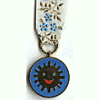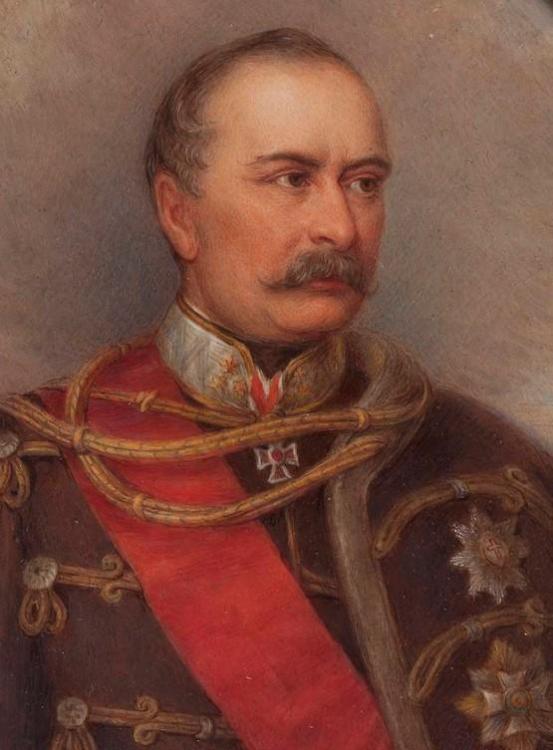-
Posts
684 -
Joined
-
Last visited
-
Days Won
3
Content Type
Profiles
Forums
Blogs
Gallery
Events
Store
Everything posted by Lukasz Gaszewski
-

Question about Albanian Medal of Brave
Lukasz Gaszewski replied to johnprice's topic in Southern European & Balkan States
I have an extra question: the first medal is worn on a red ribbon with black edges, while that of the other medal is plain red. Does anybody know if these are the correct ribbons for both classes? -
With all respect, but I will insist on Baden - for at least two reasons: 1. the eyelet - typical of Baden's medals. Can you think of any other German-speaking country's medals with the eyelets like that? 2. the ribbon - I will insist that the edges are white, not yellow like in those Anhalt or Mecklenburg medals shown above. Yellow used to come out quite dark on old photos - just have a look at the prince's Militärverdienstkreuz of Mecklenburg-Schwerin. Its ribbon should have yellow and red edges and the yellow look even darker than the red. The sequence of colours on the ribbon of our researched medal (dark with dark side-stripes and white edges) matches the ribbon of the Friedrich-Luisen-Medaille.
-

Dresden Army Museum visit 2019
Lukasz Gaszewski replied to Bob Lyons's topic in Germany: Post 1945: Bundesrepublik & DDR
Good photos, Bob! You have made me want to visit the museum, when I am in Dresden next time. Still, I think all the museum collections will not counterbalance the loss of the Diamond and Ruby Suits of the Order of the White Eagle, stolen from Grünes Gewölbe last year. BTW: times do change. When I lived in Germany in 1990s it was impossible to see any items with Hakenkreuz symbols on display in public. Even in a museum! Now it seems very different indeed. -

Medal 'Benemerenti' Award Ceremony
Lukasz Gaszewski replied to Antonio Prieto's topic in Southern European & Balkan States
I think that despite the lack of the word "order" in its name it fulfills the role of a diplomatic order for foreign nationals in three classes: Grand Cordon, Commander with Star and Commander. Quite strange they did not think of a collar for heads of state. I am glad Donald Tusk is a recipient. The medals of Professional Appreciation, despite being formally a separate award, seem to be attached to the order. -
Definitely the same gentleman, a Hungarian officer. He even has the same set of decorations. On the second photo he is in the uniform of a major-general. On the first photo is he is in the Hungarian attila uniform of hussar cavalry, already in the rank of lieutenant-general. I think I have seen his photo before, but I cannot recognize him right now.
-

Picture - old gentleman, high ranking orders, help appreciated!
Lukasz Gaszewski replied to ArHo's topic in Russia: Imperial
Respect! -

Soviet Guards LTC and a polish Master Corporal
Lukasz Gaszewski replied to SovPha's topic in USSR: Soviet: Other Militaria
The photo did not come through. Please post it again. -

Picture - old gentleman, high ranking orders, help appreciated!
Lukasz Gaszewski replied to ArHo's topic in Russia: Imperial
Well, all those badges looked quite similar. To me they look more like academic or society badges. I am not even sure if the gentleman was a military. He looks fairly civilian to me. If he was a soldier, his orders would probably have swords. The neck decoration is the Order of St. Vladimir 3rd Class and the star is of St. Anne 1st Class. To me he looks like a high-ranking state official (a state councillor or higher), or a university professor. -
Well, it does make sense. You can say he got it at the last possible moment. Your idea of the swords on the ring seems sensible, too. Note that on the miniature chain the cross has "standard" swords instead (I am not even sure if miniature crosses of the Lippe House Order with swords on ring were ever manufactured).
-
On this photo he is wearing a Russian uniform (so is the man behind in the middle). The sash (and upper star) is of the Order of St. Andrew. According to The Titled Nobility of Europe (1914), the Großherzog was the knight of the following orders: Black Eagle of Prussia St. Hubert of Bavaria St. Andrew of Russia Annunciation of Italy Elephant of Denmark Rue Crown of Saxony Grand Cross of the Victorian Order of Great Britain (1907).
-

Polonia Restituta to foreigners
Lukasz Gaszewski replied to JohanH's topic in Central & Eastern European States
Quite common and in all classes. Remember that at that time (1966) Polonia Restituta was the only "diplomatic" order of merit of the country and People's Poland maintained diplomatic relations with almost all countries of the world. Not only those of the eastern bloc. The situation changed diametrically in 1974, when the Order of Merit of the People's Republic of Poland was established. From then on, Polonia Restituta started being conferred exclusively upon Polish citizens, and to foreign nationals in exceptional cases only. -
Very sorry to hear it. It was probably the best site about Scandinavian (particularly Swedish) ODMs. Axel did a great job indeed. I archived the site some three years ago, and wanted to do it again now, just before the New Year. Still, due to its size and complex structure the site was a nightmare to archive, so I decided to put it off until after the New Year and then it was already unavailable. You never know what you are going to miss. It seems that what has been stored on webarchive.org is just a small fraction of the original site. Three years ago I archived over 9,000 photos of Swedish medals alone! Axel's passing away is a huge loss to all ODM specialists and enthusiasts. Hopefully the site will be revived one day.
-

Romanian shoulder boards (post 89)
Lukasz Gaszewski replied to Euronymous's topic in Central & Eastern European States
I believe that the new system of military ranks was introduced by Lege 80 of 1995: http://legislatie.just.ro/Public/DetaliiDocument/6151 The new rank insignia were generally based on those used before WWII, yet with some modifications. As far as I remember, rank insignia of generals initially resembled those used in the Bundeswehr and they were modified again a few years later. -

General in three armies
Lukasz Gaszewski replied to Daffy Duck's topic in Southern European & Balkan States
It is easier with the second photo. The decorations on the ribbons may be as follows: Russian Order of St. Vladimir 4th Class with swords Montenegran Order of Danilo 5th Class Russian Order of St. Anne 3rd Class with swords Russian Order of St. Stanislas 3rd Class with swords Montenegran Obilich Medal (?) The neck decoration is probably the Russian Order of St. Vladimir 3rd Class The stars are from: Montenegran Order of Danilo Russian Order of St. Stanislas Italian Order of the Crown The photo seems to be after somebody's funeral (black armband). If we could find out whose, we could date it. -

Alfons Friedrich von Mensdorff-Pouilly
Lukasz Gaszewski replied to Lukasz Gaszewski's topic in Austro-Hungarian Empire
A perfect shot Trooper_D! Please do accept another cigar from me, too I also thought of the Order of Christ, but the cross on the star looked a bit too different to me. I was also not sure if at that time (my portrait was dated to 1865) the eight-pointed star was already in use. It seems that the painting at the Boskovice palace was exactly that from which my miniature was made. Yes, the other star is of the Order of the House of Saxe-Ernestine (from which Albert, Prince-Consort of Queen Victoria also , originated). To make the things entirely clear, the neck decoration is the Commander Cross of the Austrian Order of Leopold - but I think it is obvious to everybody here. The funniest thing is that a few years ago I myself had the opportunity to visit the palace in Boskovice (which is located north of the City of Brno in the Czech Republic), but I completely do not remember if the portrait was there or not. Anyway, I would be delighted to learn who the painter was. I could not find it anywhere on their site. Trooper_D, Alex and laurentius, thanks once again for your assistance. Regards, Lukasz -

Polish WW2 & Later Medal / Badge Group
Lukasz Gaszewski replied to vladtheman03's topic in Central & Eastern European States
Nice to meet you again, too -
Hello All, This is the portrait of count Alfons Friedrich von Mensdorff-Pouilly in the uniform of a Hungarian cavalry colonel. I am interested in your opinions about the sash and the upper star. What can they be from? I have some theory but I do not want to impose my view. I will owe a lot for assistance. Regards, Lukasz


